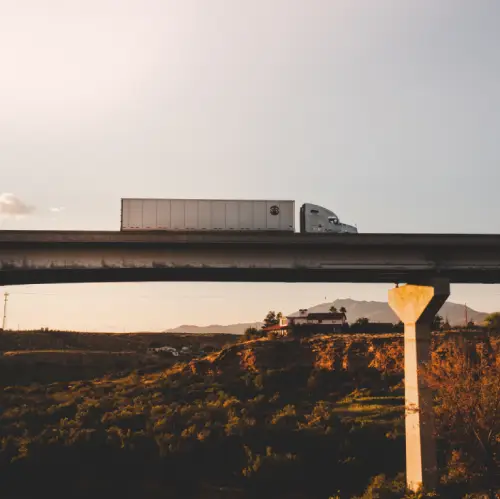Transportation
According to the United States Department of Transportation, almost 20 billion tons of goods were shipped in the U.S. during the most recently reported year. The various modes of commercial transportation utilized in this industry bring about many avenues for incidents and accidents. The vehicles used, the roads, waterways, and rights-of-way along, and the facilities that support operations are all subject to accidents.

Trucking
In the U.S., the trucking industry accounts for 67% of all goods shipped in commerce. Buoyed by the Interstate Highway System, long-haul routes expose the trucking industry to weather- and traffic-induced incidents and accidents across the country while the mixture of commercial and personal vehicles in the cities create similar circumstances. The size of these vehicles alone can lead to grim results from what would otherwise seem to be simple accidents.
Our engineers are often called upon to respond to these accident locations on behalf of our clients while law enforcement personnel are still on-scene and at times even before the vehicles have been removed. We carefully map the scene using a combination of extensive experience and highly technical equipment such as 3D scanners and drones, creating a detailed digital “memory” of the scene’s details.
This information is used for subsequent comparison to evidence collected, including vehicle damage, length of skid marks, downloaded data from the vehicles’ event data recorders, witness accounts of the event, and injuries sustained by those involved. Finally, our team of animators recreates the accident visually, producing a detailed video that combines precise calculations provided by the investigators with details gathered from the 3D scan, creating a powerful tool for use in the dispute resolution process.
Rail
Second only to trucking in terms of goods shipped, the domestic rail system transports more than 10% of the freight that moves across the U.S. A freight train can be thousands of yards in length and can require more than a mile to bring itself to a halt. Incidents can result from human error such as incorrectly set switches, misreading of the switch position signal, excessive speed for track or weather conditions, and crew inattention.
Track-related conditions can cause derailment and equipment failure can lead to catastrophic events. Our experts have reconstructed the accidents to determine the cause, helping our clients to avoid similar future incidents. We have also created animations of rail accidents as they would have been seen from overhead, from trackside, or even from the cab of the locomotive.
Marine
Domestic freight transportation by marine vessels represents only 5% of the U.S. total, yet incidents occur with an alarming frequency. Our engineers have investigated collisions between ocean-going vessels on inland waterways, collisions with fixed objects such as bridges and piers, vessels running aground, and propulsion and other equipment failures. We have also investigated failures of shore installations serving the marine industry, particularly those associated with weather incidents such as hurricanes.
Other Transportation Services
In this final category of transportation are multi-mode operations, including the U.S. mail and parcel carriers, along with pipeline transportation, which represents a total of almost 18% of the domestic freight and product transportation industry segment. By their nature, multi-mode operations carry all of the risks described above as their various components come into play.